
23 Vibrant Traditions That Define Mexican Culture: Viva Mexico!
23 Vibrant Traditions That Define Mexican Culture: Viva Mexico!
Mexican culture is full of colors, parties, and lots of joy. Living the Mexican festivities to the fullest means encountering the past.
Each has its essence, resulting in a different experience.
These festivities harbor ancestral traditions, religious beliefs, music, and an exquisite gastronomic offer, reflecting the historical richness of our country.
In today’s article, I will share Mexican culture’s most important traditions and customs that make you want to visit this beautiful country.
Mexican Culture: 23 Most Important Festivities and Traditions in Mexico
1. Day of the Dead: The flagship of Mexican Culture

UNESCO declared it an Intangible Cultural Heritage of Humanity in 2008 and gained international fame thanks partly to the Pixar movie: Coco.
This Mexican tradition is undoubtedly one of the favorites of locals and foreigners.
Why is Day of the Dead celebrated?
Although a quick answer would be “to remember our loved ones after their death,” this tradition has many more secrets. They go back more than 800 years.
It is said that the origin of the Day of the Dead dates back to the time of the Aztecs.
They believed that a person’s fate after death did not depend on how they had behaved in life but on how they had died.
Therefore, there were different destinies for each of the souls.
People who died by drowning went to Tlalocan (the paradise of the rain god).
For those who died in combat, there was Omeyacan (paradise of the sun) and Chichihuacuauhco for children.
But for the souls to reach their destination, the living had to accompany them through a ritual. This ritual was Mexico’s first “celebration” of the Day of the Dead.
After the conquest, this tradition changed until it evolved into what we have today: altars, sugar skulls, and pan de Muerto.
A curious fact about this Mexican tradition is that its celebration coincides with the passage of monarch butterflies through Mexico.
Because of this, our ancestors believed that butterflies carried the spirits on their wings, helping them journey to the world of the living.
2. The Guelaguetza
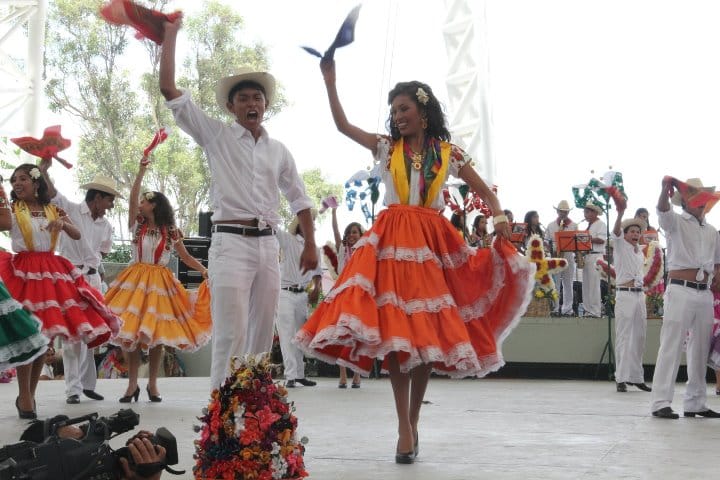
It’s time to move to Oaxaca and discover one of Mexico’s most joyful and devout traditions: La Guelaguetza, also known as “Fiesta de Los lunes de Cerro.”
This celebration takes place on the following 2 Mondays in July because it is part of the popular worship of the Virgin of Carmen.
During the Guelaguetza festival, folkloric, cultural, and sports presentations occur.
The intrinsic meaning of this Mexican tradition lies in demonstrating the cooperation among the inhabitants of Oaxaca, which is why its name derives from the Zapotec language “guendalizaa” (to cooperate).
3. Day of Our Lady of Guadalupe: Religious Mexican Culture
The history of this celebration begins in the year 1531, when according to Mexican tradition, on December 9, 1531, an indigenous man named Juan Diego witnessed the first apparition of Our Lady of Guadalupe.
These apparitions had one objective: to convince the bishop of that time to build a temple, which happened a short time later.
Today the Basilica of Guadalupe is one of the most visited places by millions of Mexicans and foreign parishioners.
One of Mexico’s traditions for this Day is that every December 11 at midnight (dawn on the 12th), thousands of Mexicans congregate with offerings, songs, and renowned artists to sing the “mañanitas” (happy birthday) to the virgin.
Rosaries and dances are also celebrated in people’s homes to honor the virgin.
Typical food for the festivity is offered to neighbors, relatives, dancers, and all those who come to the celebration.
4. The Cry of Independence (El Grito)
Thousands of Mexicans gather yearly on September 15 at the main square (Zocalo) in Mexico City to commemorate their independence from Spain.
It is a Mexican tradition where the country’s President rings the bell and starts with the “cry of independence.”
What is the origin of Mexico’s Cry of Independence?
It is said that this Mexican tradition began when the priest Miguel Hidalgo incited the people of Dolores Hidalgo (Guanajuato) to rise against the Spanish Viceroyalty on September 16, 1810, with the famous cry.
José María Morelos proposed solemnizing September 16 as the anniversary of the Mexican Independence to commemorate such an important occasion in Mexican history.
But in 1896, President Porfirio Diaz ordered that the bell with which Hidalgo summoned the people to start the Independence movement be moved from Dolores Hidalgo to the National Palace in Mexico City.
This began one of Mexico’s most patriotic traditions: The Cry of Independence.
It became customary for the President to be the one to initiate the shout and ring the bell on the night of September 15.
5. The Mariachis
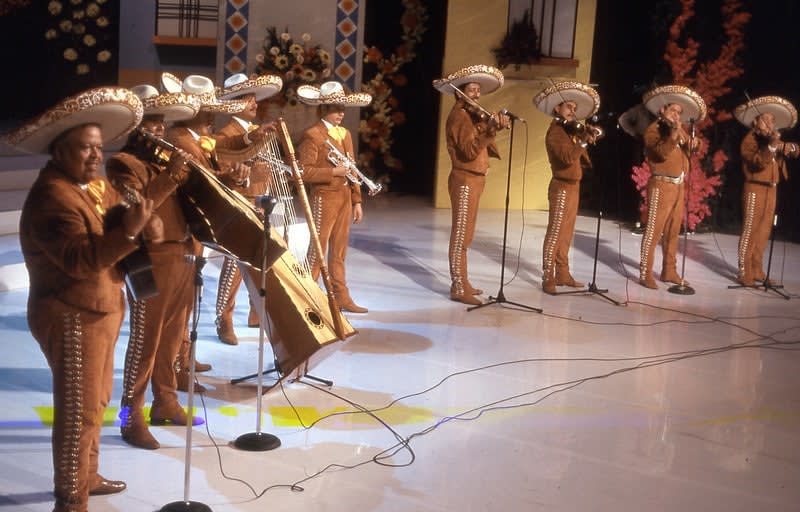
If there is something for which musical culture in Mexico is known worldwide is its famous Mariachi.
One of Mexico’s traditions is celebrating such occasions with a good mariachi show, whether it is a birthday, serenade, wedding, or anniversary.
If you visit Mexico and want to listen to authentic mariachi songs, I recommend you take some time out of your itinerary and visit Garibaldi Square in Mexico City or Plaza de Los Mariachis in Guadalajara.
A curious fact is that the word “mariachis” comes from the French word “mariage.” which means “wedding.”
The French in the 19th century named the wedding music ensemble “mariach,” which eventually derived from mariachi.
6. Cinco de Mayo
The Cinco de Mayo celebration is one of Mexico’s traditions that commemorates the triumph of the Mexican army against the French invaders after the Battle of Puebla.
On the morning of May 5, 1862, the French soldiers attacked the Mexican army in Puebla due to a default on a debt of 80 million dollars.
The battle in Puebla lasted all Day, but the Mexican army was victorious at nightfall due to the French army’s lack of territory knowledge.
Cinco de Mayo is more celebrated in the United States than it is in Mexico.
Nowadays, it is customary to commemorate the exploits of the Mexican army in this battle.
During the last 16 years, it has become customary for the President of the United States to attend the celebration.
7. Mexican Culture in sports: Lucha Libre

Undoubtedly one of Mexico’s most joyful sports traditions is Lucha Libre.
In a lively atmosphere, watching masked characters give their best to win the belt makes all spectators become faithful participants.
This Mexican tradition began in 1840 before it was formalized as a sporting discipline.
You may want to read: Traditional Mexican Clothing: Top 10 Prettiest Outfits of Mexico
Today, it is difficult not to associate a wrestler’s mask with Mexican culture.
This activity is one of the best representations of the country, both nationally and internationally.
So if you want to know a little more about this Mexican tradition, there is no better way to do it than participating in one of its shows at the Arena de Mexico.
8. Los Reyes Magos (The Three Wise Kings)
One of the most important traditions in Mexico is the celebration of Three Kings Day every January 6.
This day symbolizes the end of the Christmas season in Mexico, and its origins date back to shortly after the Spanish conquest.
This celebration arises from the Catholic tradition of the Epiphany, in which the wise men’s visit from the East to Jesus after his birth is observed.
It is believed that three characters were guided by a star to Bethlehem and gave gifts to the Son of God in gold, frankincense, and myrrh.
This idea promotes the Mexican custom of offering gifts to children who ask the Three Wise Men for their desired toys through a letter.
Traditionally, this letter is left on the Christmas tree or sent through a balloon, which carries the wishes to the Three Wise Men.
On the eve of January 6, children should leave their shoes at the foot of the Christmas tree or next to a window so that they will discover the gifts the Three Wise Men brought to them when they wake up.
9. The Dancing Flyers
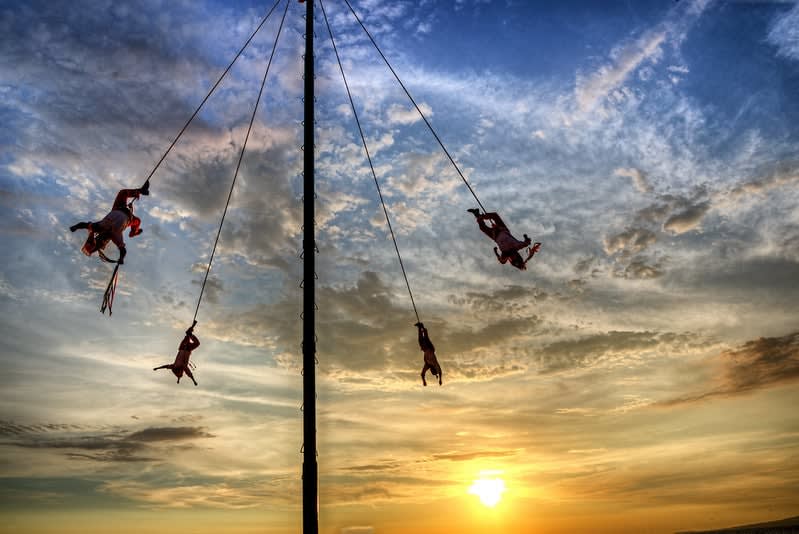
The Papantla flyers have been considered an Intangible Cultural Heritage of Humanity since 2009 and have been practiced since the Early Postclassic (900-1200 A.D.).
The tradition of the dance of the voladores is still practiced by some people in Mexico and Central America.
The goal of this dance is to express the respect professed towards nature and the spiritual universe, as well as harmony with both.
During the ceremony, four young men climb a mast 18 to 40 meters high made from the trunk of a freshly cut tree.
A fifth man, the caporal, plays melodies with a flute and drum in honor of the sun.
After this invocation, the dancers throw themselves into the void from the platform tied to long ropes.
They turn to imitate the flight of birds while the rope unwinds and gradually descends to the ground.
10. Mexican Piñatas
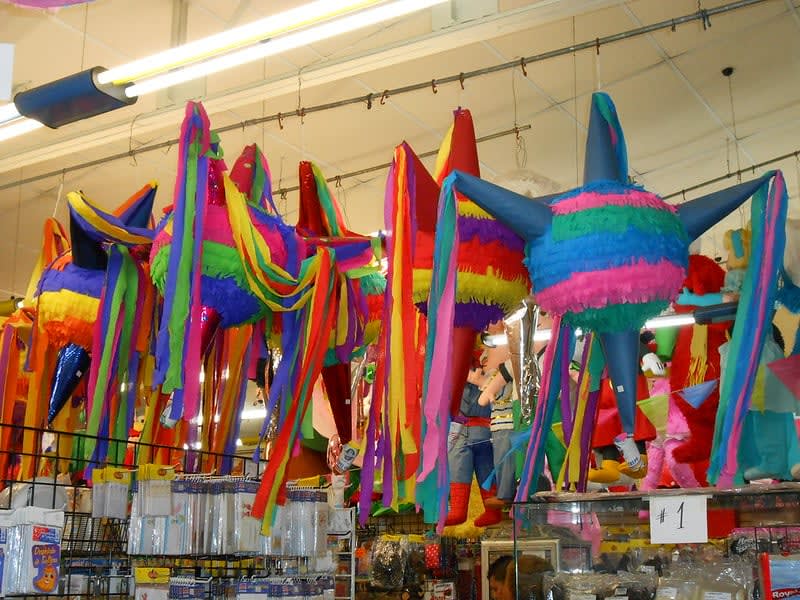
Used in birthday parties and posadas, the breaking of the piñata is undoubtedly one of the most fun traditions throughout Mexico.
It all started in faraway China. The inhabitants of that Asian country had, for centuries, a kind of piñata in the shape of an ox or a cow that they made with colored paper and filled with seeds.
The Mandarins would smash them to pieces during the Chinese New Year and set them on fire.
Those attending this celebration would fight each other over the ashes of the piñata, which they considered good luck.
It is said that the explorer Marco Polo, on one of his trips to China, witnessed this celebration and took it to Italy.
It was named “pignatas” in the European country and spread throughout Europe.
Thus, by the time of the Spanish Conquest, piñatas were brought to America to be used as the primary means of blending some indigenous traditions with Catholicism.
Nowadays, a party without a piñata is not a real party!
11. Tequila, of course
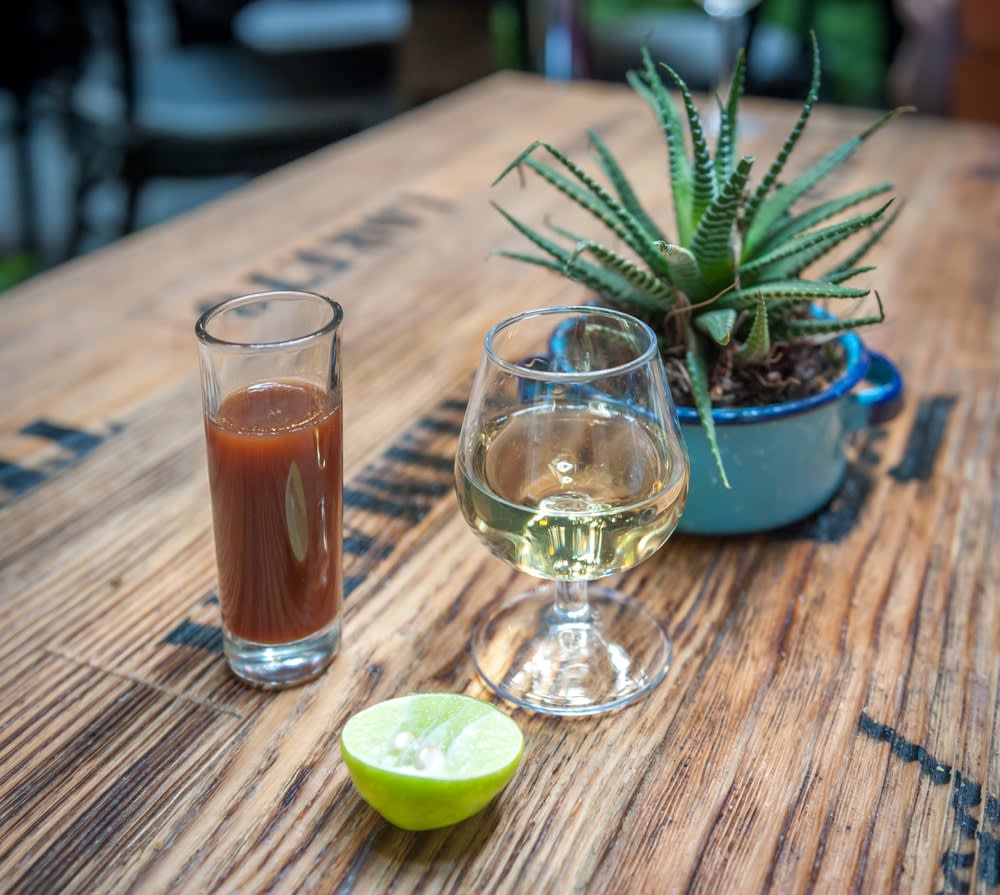
If you ask a foreigner 3 Mexican traditions they know about, they will probably tell you about Day of the Dead, mariachi, and tequila.
But do you know the origin of this drink, so representative of Mexican culture?
This fiery water was first produced in the 16th century and took its name from the city where it was born. Tequila Jalisco.
Tequila comes from a plant of the Agavaceae family, which is the blue agave tequilana Weber variety.
Read more about Mexican spirits.
Currently, there are about 295 different agave species, and only one can be used to produce the beverage.
12. Day of the Holy Innocents
December 28 is not a good day to be distracted because, on this day, one of the funniest (for some) or cruelest (for others) Mexican traditions of the year is celebrated.
Playing pranks on “innocent” people is customary, so you better watch out for suspicious acts or “weird” news from friends and family.
Although this Day is used to play little pranks nowadays, it has a deeper meaning.
April Fool’s Day dates back two thousand years when King Herod ordered the murder of thousands of children to get rid of Jesus.
From this horrible slaughter, Jesus was saved because an angel appeared to Joseph, Jesus’ father, and ordered him to flee from danger.
However, hundreds of children died, so the Catholic Church remembers this Day as the Day of the Holy Innocents.
Sadly, the real meaning of this Day was lost over the years to what we have today.
Some historians blame this transformation on the “Feast of Fools” that occurred in the Middle Ages in Europe and was celebrated between December 24 and 31.
At this celebration, all kinds of excesses and jokes were played.
13. Fun at the Veracruz Carnival

You don’t need to travel to Brazil to enjoy a good carnival.
In the city of Veracruz, you can experience one of the most famous and traditional carnivals in Mexico and the world.
This carnival is considered “The most joyful” and occurs from February 10 to 16th every year.
The celebration of this carnival dates back to 1866 when Mexico still endured the imposition of Maximilian’s government.
Still, the locals asked the corresponding authorities for permission to celebrate the “Fiesta de las Mascaras” (Festival of the Masks).
Once they had the authorization, the first carnival of Veracruz was held.
One of the most recent traditions of this carnival in Mexico is the election of the Carnival Queen, in which many young girls compete for the honor of leading the most important part of the port and the state.
14. The Catrina
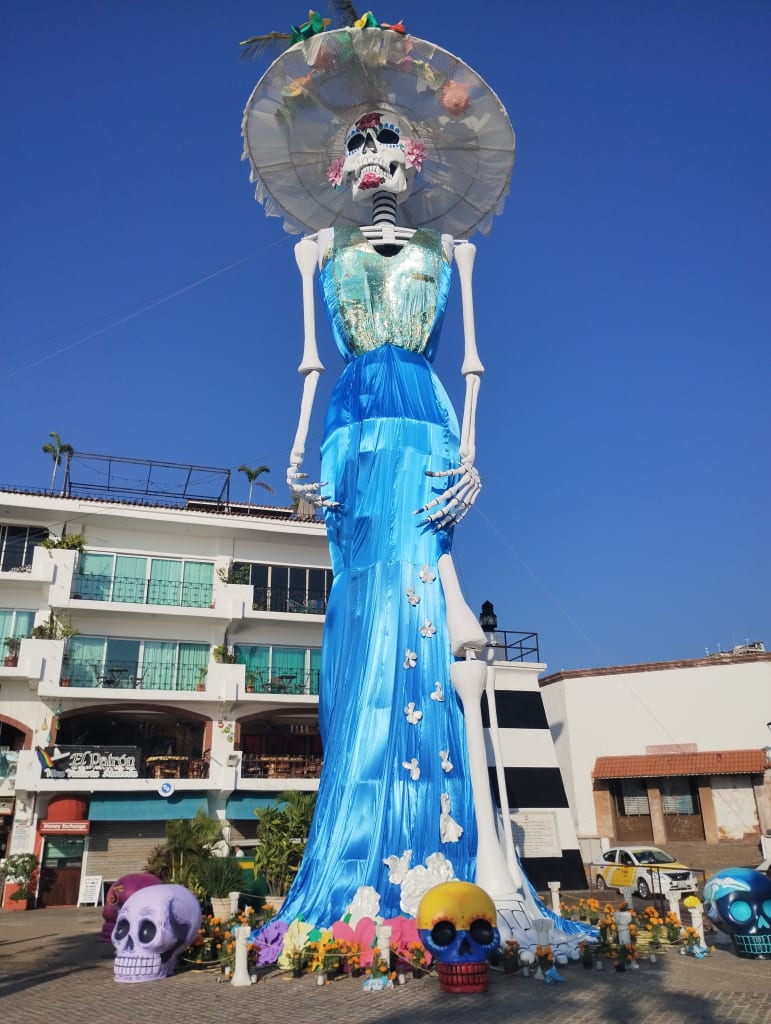
The Day of the Dead was the first Mexican tradition I wanted to share because of its significance in Mexican culture.
One of its best symbols is La Catrina, originally called “La Calavera Garbancera.”
This female figure has more than 100 years of history.
Its origin dates back to when the Mexican caricaturist José Guadalupe Posada created it to mock the indigenous people who had become rich and despised their origins and customs.
But the famous painter Diego Rivera gave it its current fame when he coupled the figure in his well-known work “Sueño de una Tarde dominical en la Alameda Central” (Dream of a Sunday Afternoon in the Central Alameda).
Today, it is a Mexican custom for women to dress up as this character to celebrate the Day of the Dead.
15. Alebrijes Parade
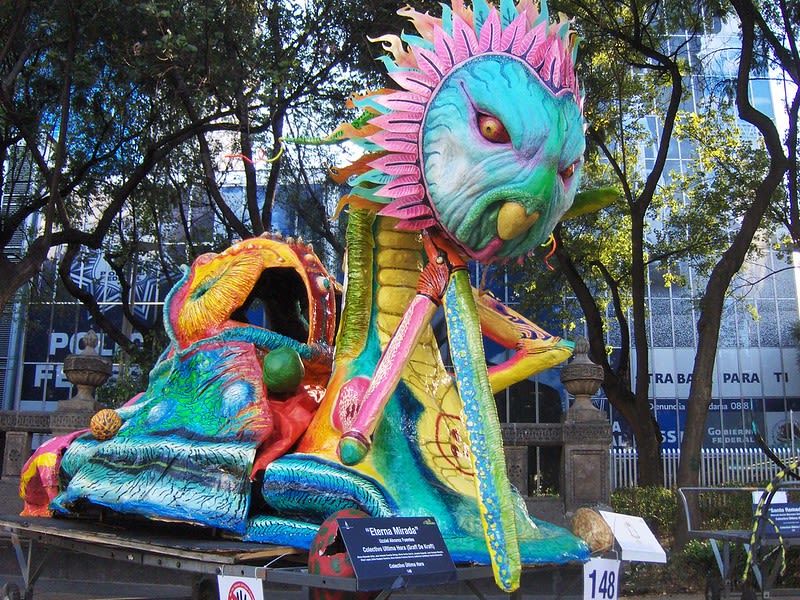
Organized by the Museum of Popular Art, the alebrijes parade is one of Mexico’s traditions that seek to pay homage to works of art built only with cardboard, paper-mâché, and painted with bright colors.
It is customary to carry out this parade in October.
These works of art are known as “alebrijes” and can be in the shape of animals, plants, or imaginary beings.
Read more about Alebrijes
This parade goes through the main avenues of downtown Mexico City, starting at the Zócalo and ending at the Angel de la Independencia traffic circle.
16. Anniversary of Benito Juarez

Every March 21, the Mexican people have the custom of honoring the memory of one of the most important characters in their history: Benito Juarez.
Born in 1806 in Oaxaca, this Mexican lawyer and politician of an indigenous origin is well remembered for the reforms he carried out in the Constitution when he occupied the country’s presidency.
Benito Juárez (1806 – 1872) was Mexico’s first and only indigenous President.
He is also known as Benemérito de las Américas due to his fight against the French invasion.
Because of these achievements and others, the celebration in honor of Benito Juarez is one of Mexico’s most important traditions.
17. Revolution Day
November 20 commemorates one of the most critical events in Mexican history of the 20th century: The Mexican Revolution.
This Mexican tradition seeks to remember the uprising in arms on November 20, 1910, led by Francisco I. Madero when he proclaimed the Plan de San Luis.
This revelation aimed to remove President Porfirio Diaz from office, who had held power for over 30 years.
Today, among the habits and customs in Mexico to celebrate this date are the various parades, such as the “November 20 Sports Parade,” in which sports teams from various government institutions participate.
18. Mexican Culture: Skulls’ festival
This festival emerged in 1994 as an attempt to preserve the traditions and events surrounding the Day of the Dead festivity, an essential part of the cultural manifestations of all Mexicans.
The festival is held in late October and early November in Aguascalientes.
Among the Mexican traditions to celebrate the Day of the Dead in this festival are a skull parade, craft exhibitions, and traditional gastronomy pavilions.
19. Quinceañeras (sweet sixteen)
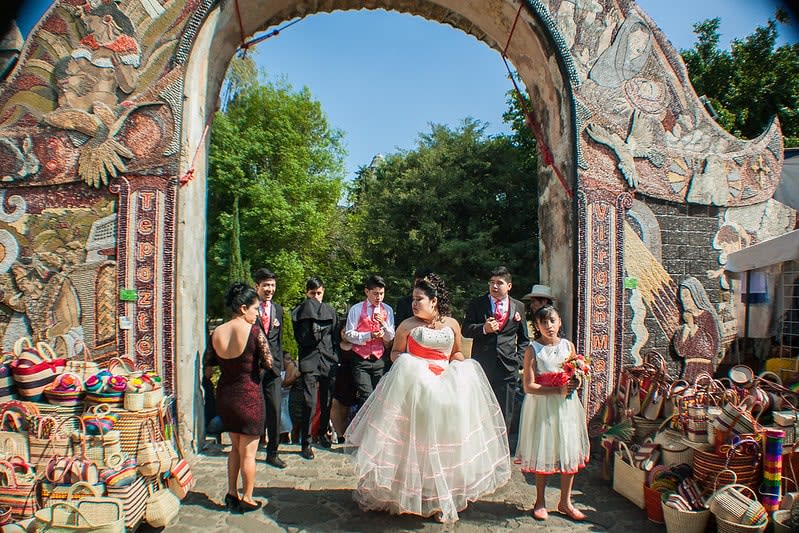
Quinceañeras have a special place in Mexican culture.
It marks a young woman’s transition from childhood to adulthood and is often celebrated in a lively manner with music, dancing, and food.
Although quinceañera traditions may vary from family to family, one of the most iconic aspects is the over-the-top attention to hairstyle, manicure, and photos in a formal evening gown.
20. San Marcos Fair
Back to the state of Aguascalientes. This time it’s for its national Fair of San Marcos, which takes place between April and May each year.
This celebration is also known as “the Fair of Mexico.”
The event consists of transforming the streets of the San Marcos neighborhood into a stage for artistic, cultural, and social events open to the public.
The main goal of this Fair is to commemorate Saint Mark the Evangelist, the designated patron saint of the neighborhood where this event is held.
21. The posadas – Mexican Christmas parties
Las posadas are a series of Mexican traditions carried out since colonial times.
Their origin is religious, and they recall the pilgrimage of Joseph and Mary on their way to Bethlehem.
This tradition is celebrated from December 16 to 24.
During these days, it is customary that the neighbors of each town take the role of pilgrims lit by candles and go out in search of an inn.
Upon finding a posada (inn), Mexican tradition says that a hot fruit punch should be offered to the tired pilgrims.
22. Mexican Culture: The Cholula Fair
For the first two weeks of September, the municipality of San Pedro Cholula, in the state of Puebla, organizes its traditional Fair.
Visitors enjoy the local gastronomy, handicrafts, and other aspects that make this fair one of the most popular in the region.
One of the traditions of this Fair is the “trueque” (exchange of goods), where money takes a back seat, and the tradition of pre-Hispanic trade prevails.
23. Holy Week Processions
Holy Week in Mexico is one of the best-known religious traditions. It commemorates the passion, death, and resurrection of Jesus Christ.
This is the most important time of the year for the Catholic community.
Among the Mexican traditions for this festivity are the famous processions.
Although these are carried out all over Mexico, some processions stand out: The parade of Silence in Queretaro and the one in Taxco Guerrero.
Mexican Culture: 23 Most Important Traditions in Mexico – Conclusion
In conclusion, Mexican culture is rich and diverse, with many traditions deeply ingrained in its people’s daily lives.
From food and drink to holidays and celebrations, the traditions of Mexico reflect the country’s history, religion, and values.
Whether it’s enjoying a delicious plate of tacos, participating in the colorful festivities of Dia de los Muertos, or admiring the intricate designs of traditional Mexican textiles, there’s something for everyone to appreciate and enjoy in this vibrant and dynamic culture.
By understanding and appreciating these traditions, you can gain a greater appreciation for the beauty and complexity of Mexico and its people. Vamonos!